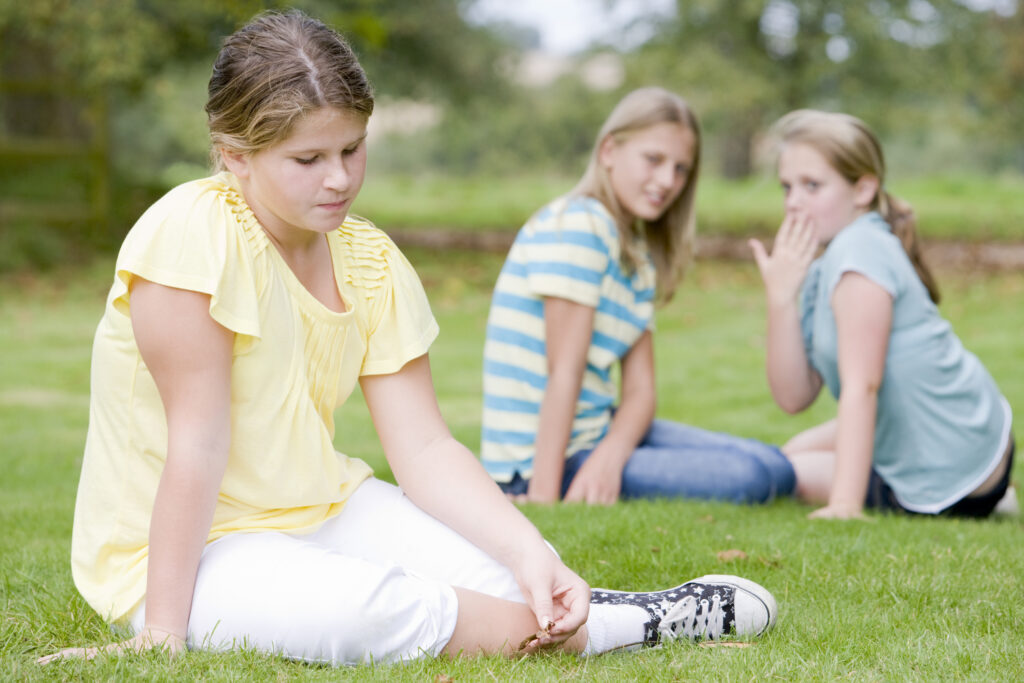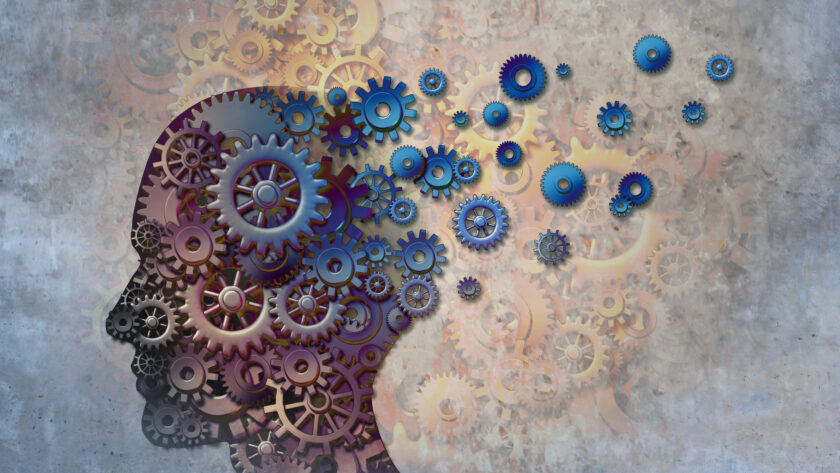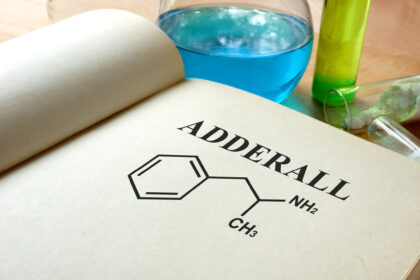How Do Our Perceptions of Other People & Ourselves Affect the Development of SUDs?
Abstract
The development of Substance Use Disorders (SUDs) is a complex topic filled with a variety of aspects in terms of pressure, influence, and development. There are factors of peer pressure, which can be broken down into categories within itself. Some of these categories include friend pressure, family pressure, role model pressure, and celebrity pressure. Peers, parents, siblings, and other people close to an individual can pose a significant risk in personal development and identity, including the adoption of substance use behavior. There are factors of influence from groups, social identity, and self-perception; and there are factors behind the development of SUDs as it matures. Comorbid conditions can even contribute to the development of the illness. Oftentimes, SUDs will start during adolescence, however, it is true that the condition can strike at any time in an individual’s life. Finding the root causes of this condition and fully understanding its etiology is imperative in properly treating the condition. A lot of the root causes can be traced to some form of social cognition. Breaking down how an individual interprets their relationship with their environment, their social ladders, and their interactions with others is critical in comprehending SUDs.
Introduction
The correlation between social cognition and Substance Use Disorders (SUDs) spawns a lot of interrelated concepts which help explain how the condition of SUDs develops and matures over the course of time. Of the many facets of social cognition which play a part in the development of SUDs, there are some which have a more significant influence. Peer pressure and group relationship, social identity, and self-image, are some of the most prevalent contributing risk factors in the development of SUDs. There is also a slew of environmental factors which contribute to the development of SUDs. Understanding how these factors fit together and play a constituent role in the development of the condition can better help researchers and mental health professionals determine early susceptibility to the condition. It can also help mental health professionals learn better treatment protocols which may prove more efficient in the treatment of SUDs.
Social Cognition and SUDs: An Overview

Substance Use Disorders (SUDs) can be defined as a mental condition which affects a person’s thought process and behavior, ultimately leading a person to an inability to control their substance use (NIMH, 2022). Substances may be defined to include both legal and illegal substances such as alcohol, tobacco, prescription narcotics, marijuana, cocaine, and other illicit substances. Unfortunately, SUDs can contribute to the development of several comorbid conditions, as well as exist alongside these pre-existing conditions (even being inspired by these conditions themselves) including anxiety disorders, attention-deficit hyperactivity disorder (ADHD), bipolar disorder, depression, personality disorders, and schizophrenia (2022). Breaking down some of the largest contributing social risk factors behind the development of SUDs is critical in better understanding it, diagnosing it (especially detecting it early), and treating the condition.
Peer Pressure and Groups
Many types of peer pressure and social group interaction exist which can contribute to the development of Substance Use Disorders (SUDs). There are relationships of all types in an individual’s life, including friends, family, significant others, role models, and celebrities. All these relationships have the potential to influence the development of SUDs. Isolating each of these impacts could be considered crucial in understanding how each relationship poses a risk to substance misuse, and ultimately to an individual adopting SUDs at any point in their life.
The Impact of Friends in Developing SUDs
One of the most prevalent forms of peer pressure can be found in friends themselves (Loke & Mak, 2013). This is also one of the most influential forms of peer pressure, with some studies even showing it to be the number one environmental influence on behavior and the development of SUDs (2013). Partly, this may be due to the sheer amount of time individuals spend around their friends. It also may be due to the fact people have an innate, internal need to want to “fit in” and belong to a social group (Koski et al., 2015). There are studies which show that peer pressure from friends can be used as a predicting factor for future substance abuse (Abikoye et al., 2014).
The phenomena of peer influence over substance misuse is especially true for adolescents (Branstetter et al., 2011). One longitudinal study outlined associations found between adolescents and their friends who used substances to find any subsequent substance use on part of the adolescent individual. This study analyzed 166 adolescent participants and found that one of the most consistent predictors in an adolescent’s substance use was their friends’ substance use behavior (2011). This makes a lot of sense, considering how much time adolescents may spend with their friends instead of other influences. In other words, a lot of times people become a part of the groups and environments of which they spend most of their time (Gencer, 2019). Another study showcased a child’s likelihood of even smoking cigarettes if their best friend smoked to find that the child was significantly more likely to adopt smoking themselves in the case their friend partook in the bad habit (Wainright & Patterson, 2006).
It is also true that individuals who are susceptible to SUDs (and who develop SUDs) are far less likely to possess social support network resources (Pettersen et al., 2019). One study outlined the role of social relationships in achieving remission from SUDs and abstaining from the condition, finding that supportive social relationships were critical in this process. This study specifically indicated that reaching and maintaining abstinence from substance misuse directly correlated to possessing a strong, positive network of relationships which engaged one’s self-agency to protect oneself from the influences of other, negative relationships (2019).
The Impact of Family in Developing SUDs
The influence family members have over the adoption of substance misuse in an individual could be called significant (Shek et al., 2019). This is especially true for the developing adolescent (Lipari & Van Horn, 2022). In fact, family influence is considered one of the strongest contributing risk factors for an adolescent developing Substance Use Disorders (SUDs) (Vakalahi, 2001). One review of substance misuse literature found that there are a number of theories for better understanding adolescent substance use and found family-based variables to be extremely high in influence when it comes to an adolescent picking up a substance use habit (2001).

Parents in particular have a significant influence over the development of substance abuse in adolescents (Lipari & Van Horn, 2022). This is especially true for parents sharing the same gender as the adolescent (Wainright & Patterson, 2006). This is presumably true because the adolescent is most likely to look up to same-sex parents (2006). One study indicated that children with parents who did not possess substance abuse tendencies were far more likely to have positive psychosocial outcomes (Peleg-Oren & Teichman, 2008). Similarly, those children with parents who partook in regular substance misuse were shown to groom their children to be more susceptible to negative psychosocial outcomes, including the use of substances themselves (2008).
Something should be said about the influence older siblings have over their younger cohorts. A lot of times, this is considered another strong influence over an individual, especially when it comes to substance misuse and the development of SUDs (Brook, 1999). One study examined the nature of influence as it correlates between an older and younger brother, whereas the older sibling partook in substance use, finding that the younger sibling’s personality was significantly altered to adopt substance misuse characteristics himself (1999). Another study found that older sibling use of alcohol almost always resulted in the younger sibling modeling the same behavior (Whiteman et al., 2013).
Substance use amongst family members is, in itself, a serious concern when it comes to the development of SUDs in other individuals. This is because family-based influence is one of the largest contributing factors in the development of SUDs in anyone, not just the adolescent (Lander et al., 2013). This is important to note, as it insinuates that there may be a prevalence for SUDs to develop like a plague within any particular family if even one individual is affected. This type of contagious activity can be traced to a human’s likelihood of adopting behavior found within the social groups or sects of which they belong (Nye & Silverman, 2013). Social learning could be said to play one of the largest roles in the development of SUDs in general, but family can be a strong, contributing factor to both the development of SUDs or the abstinence of substance use (2013).
The Impact of Significant Others in Developing SUDs
Generally, marriage has been considered a positive construct in the deterrence of substance misuse (Heinz et al., 2008). This construct, however, is eliminated in the event that one individual within the marriage is afflicted with Substance Use Disorders. In the case one of the partners is afflicted by SUDs, research has shown that the other partner is far more susceptible to developing SUDs themselves (2008). This may have a lot to do with the amount of time married individuals spend alongside one another. It may also be due to the high influence a spouse has over their partner (Kiecolt-Glaser & Wilson, 2017).
It is worth noting that spouses may also have significantly positive impacts on their partners in terms of substance abuse. For instance, one study has indicated that a healthy marriage is one of the most profound routes to maintaining abstinence from substance misuse (Ariss & Fairbairn, 2020). This study has found the spouse to be a key role in the intervention, proper treatment, and remission of an individual afflicted by SUDs. Although broader implications and generalizations of this study are lacking, it is still a glimmer of hope in the sense that spouses may provide a great deal of much-needed support for an individual suffering from SUDs.
The Impact of Significant Role Models in Developing SUDs
There are other role models within an adolescent and individual’s life which may have a heavy bearing on the development of substance use. Part of this complex can be attributed to an individual’s innate desire to satisfy their role models (Nakanishi et al., 2019). For example, an adolescent may wish to be accepted and validated by their role models, causing them to exhibit similar behavior to said role models. This could be considered a form of self-regulation, as well as a need to solidify a personal identity (2019). In other words, if an adolescent’s role model displays activities related to substance misuse, the adolescent may be more likely to adopt these same principles and behaviors themselves.
Speaking from the positive perspective, role models have been found critical in the favorable development of an adolescent’s personality and behavior (Nakanishi et al., 2019). Role models have the power to impress positive self-regulation on adolescents. They also have the power to promote hopefulness in an individual. It could easily be argued that role models possess an ability to tilt an individual towards positive behavior. Hopeful future expectations are most certainly possible for adolescents with favorable role models present in their life and upbringing (2019).
The Impact of Celebrities or Popular Culture in Developing SUDs

It could be said that celebrities and popular culture take up a large part of an individual’s time in modern society. For example, it has been shown that American spend a great deal of time on social media and that more positive social media use leads to better self-regulated behavior and health (Bekalu et al., 2019). One study even outlined the differences between positive and negative social media use, finding that either slant possessed the ability to curve personality and behavior to match the social media content found within a user’s time on a platform (2019). This may mean that celebrities and popular culture have a stronger bearing over an individual’s tendency to engage in or abstain from substance abuse.
Social Identity
Social identity has a lot to do with an individual’s personality and decision-making (Hett et al., 2020). It also constitutes much of a person’s behaviors and actions. In fact, much research supports the concept that social identity contributes a great deal to the formation of behavior (2020). This is likely due to the fact that individuals begin to form a social identity which matches their desired belongness to a group and subsequently naturally begin to adopt the behaviors of the group (Gencer, 2019). Furthermore, the individual begins adopting the thought patterns and belief systems held by the group (2019).
With all that said, it is then no longer a far-fetched theory to suggest that some group belief systems could encompass the acceptance and use of substances. In fact, some groups may even position substance use as a facet of becoming accepted by the group or of becoming popular and well-liked within the group. These patterns of group acceptance and identity closely relate to the popular phrase “birds of a feather flock together.” In short, if an individual has detected that group beliefs and acceptance means partaking in substance use, they are more likely to indulge in those substances themselves, and ultimately more likely to contract SUDs.
Self-Image (or Self-Perception)
How an individual sees themselves contributes to the nature of their displayed, external personality, as well as their behavior (Switzer et al., 1995). This is especially true in adolescents (1995); and this type of behavioral modification can stretch to being a byproduct of how an individual sees themselves even on social media; and this modification of behavior can result in changes to self-worth (Lopez & Polletta, 2021). One study recently found that an individual’s self-perceived image on Instagram led to significant personality and behavior changes (2021). Thus, in modern society, it is apparent that even one’s self-image in social media can have massive impacts on one’s social status and their subsequent decision-making and expressed behavior.
Environmental Factors
It is reasonable to state that many social factors could exist for some individuals more than others as every individual’s situation is arguably different. Some individuals come from healthier backgrounds, while others may be facing more difficulties in terms of favorable role models. An individual’s upbringing, community, and circumstances can contribute heavily to personality and behavioral development (Bucciol et al., 2014). Stereotyping plays a large part in the achievements or deconstruction of many individuals in relation to “where they come from” (2014). Of the many environmental factors which may exist for an individual two important factors in terms of contributing to the development of Substance Use Disorders include an individual coming from a low-income household or community and the disturbingly high prevalence of SUDs in males (NIDA, 2022).
Low-Income Households and the Development of SUDs

Low-income households and communities are well-known contributing factors to the development of substance use (Baptiste-Roberts & Hossain, 2018). There are many studies which support the concept that lower income communities can contribute to the development of SUDs, and although this condition may afflict African Americans more than Caucasians, it is still true amongst all ethnicities (2018). This risk factor is present amongst adolescents as much as it is adults (Patrick et al., 2012). This is likely due to the lack of educational opportunities within these households. It may also be due the fact that parents of adolescents might have to work harder to support their families, leaving them more absent during the critical developmental phase of the adolescent.
Males and the Development of SUDs
Many studies have proven that SUDs is more likely to form in men than women (NIDA, 2022). In fact, men are more likely than females to partake in the use of almost all substances. This is especially true of illicit substances. Additionally, more men are likely to meet crisis criteria of SUDs, experience more trips to the hospital for emergency overdoses, and die from overdose. While there are still alarmingly high rates of a SUDs diagnosis in both genders, men appear to be far more susceptible to the condition (2022).
Religion and Spirituality in Preventing SUDs
It is reasonable to suggest that religion and spirituality can play a large role in the development or avoidance of substance misuse. This is because religion and spirituality can consume a large portion of an individual’s time and attention. Furthermore, religion is notoriously associated with good behavior (Clark et al., 2017). In a simpler sense, those individuals who partake in more religious activity are less likely to expose themselves to what is perceived as negative behavior (2017). Although there are many different types of religious and spiritual affiliations, it is still important to highlight some of the generalizations which can surround how religious affiliation of any kind contributes to or hinders the development of SUDs; and these generalizations help prove that there are ways for social cognition to offer positive attributes in terms of personality and behavior changes in the face of so many negative factors.
How Social Cognition Leads to the Development of Substance Use Disorders (SUDs)
Clearly, there are many social cognitive factors which can lead to the development of SUDs. This is because social cognition holds a lot of cards when it comes to developing personality and behavior (Hagger and Hamilton, 2022). In other words, a large part of the personality and behavior an individual adopts, has to do with their corresponding social interactions and environment. It could be said that breaking down these social interactions and the environment is one of the easiest ways to understand how these contributing factors lead to the development of SUDs. This development includes understanding SUDs from its infancy to its maturity. That said, it is important to note that social interactions by themselves have the power to contribute to substance misuse and the development of SUDs (2022). This may explain why peer pressure has such a strong hold over the development of SUDs in adolescents, as well as why group conformity has played a significant role in the development of SUDs in adults of any age.
Substance Use Disorders (SUDs) and Comorbid Conditions
A few more words should be said about the development of SUDs alongside comorbid conditions. This is because these conditions also affect the way social cognition impacts thought process, decision-making, and behavior. It should be noted that other mental conditions affect the risk of developing SUDs, and that individuals who suffer from other conditions may be more susceptible to socially oriented risk factors which are known to contribute to the development of substance misuse and SUDs (NIDA, 2022). This makes sense, as mental illnesses have been closely linked to substance misuse in general (Richert et al., 2020). In other words, individuals who suffer from other mental illnesses are more likely to contract SUDs; and unfortunately, with the stigmas which have been shown to still be present in modern culture for other mental illnesses, it will likely be a long time before enough research has revealed the true etiology of SUDs amongst the mentally ill population.
Stereotyping and Peer Pressure Amongst Comorbid Conditions

Individuals with mental illnesses may have a harder time fitting in and finding their identity within a social group (Corrigan & Watson, 2002). Due to this disadvantage, it is reasonable to say that an individual suffering from a comorbid mental condition may be more susceptible to substance abuse. Mentally ill people are also prone to more social avoidance (2002). They may choose to partake in substance misuse seen within a group setting in an effort to better “fit in.” There is also a lot of stigma associated with mental illness, leading to heavy prejudice against mentally ill individuals (Brohan et al., 2010). This stigma can arguably make it much harder for mentally ill individuals to form healthy relationships, which may mean they are more prone to accepting nearly any relationships, even those which are formed with people who are bad influences. With that said, individuals who form friendships with bad influences are far more likely to partake in substance misuse and adopt Substance Use Disorders (SUDs) (Pettersen et al., 2019). It is also reasonable to suggest that stereotyping individuals into negative categories may peer pressure these individuals into conforming to those character traits the outgroup perceives within them, including substance abuse. In another sense, it would be reasonable to suggest that peer pressure from individuals not even close to a person may have the indirect power to pressure that person into developing SUDs.
Conclusion
Although there are many contributing factors to the development of Substance Use Disorders (SUDs), it is obvious that social cognition, and the way social interactions affect an individual, have significant influence over personality and behavior. This is especially true over a developing personality, such as an adolescent or an individual who is attempting to conform to a group. Enumerating the ways that social cognition affects each individual’s social status and subsequent behavior is critical in fully understanding the risk factors and likelihood an individual may develop SUDs. Several studies outline the affects of the many facets of social interactions, including peer pressure and the desire to belong to a group. There are also many studies which indicate group bias towards individuals who fully adopt group belief systems, including behaviors such as substance use.
Social cognition comes into play throughout so many aspects of developing personality, group belongingness, social identity, and peer pressure. There are many forms of these elements which can manifest at all points of a person’s life, in in all sorts of combination. In fact, these concepts often work together to create a complex of influence which can lead to the experimentation with substances or even the development of SUDs. Most research in these areas is redundant and replicates similar philosophies, making it very hard for researchers to comprehend the root foundations of the condition, especially in its infancy. A lot of times, it seems substance use is first exposed to an individual during adolescence, which can make research even more difficult. This is likely due to the fact that there is a veil of secrecy over the developing adolescent experience, preventing researchers and studies from fully learning the process of developing issues. In other words, many adolescents will specifically hide or underreport things like substance use to avoid consequences. Furthermore, a lot of research seems to highlight the lack of supervision and proper parenting styles necessary to give adolescents the tools they need to avoid substance use.
While much research remains to be explored in order to better understand how to treat individuals during the risk factor and development stage of SUDs, it is easily postulated that this research would help mental health professionals get further ahead of the condition. It is also probable that this research would assist in the design of more efficient treatment protocols surrounding the disorder. Despite the fact there are many studies which exist outlining the social contributions to the development of SUDs, it could easily be argued that this research is still in its infancy. Regardless, it is clear that social cognition and how an individual comprehends their social status and interactions with other people plays a large part in the adoption of significant disorders such as SUDs.
References
Abikoye, G., Sholarin, A., and Adekoya, J., (2014). Parenting styles and peer-pressure as predictors of substance abuse among university students. Psychology and Behavioral Sciences, 3(2), 55-59. DOI: 10.11648/j.pbs.20140302.14
Ariss, T., & Fairbairn, C., (2020). The effect of significant other involvement in treatment for substance use disorders: A meta-analysis. Journal of consulting and clinical psychology, 88(6), 526–540. DOI: https://doi.org/10.1037/ccp0000495
Baptiste-Roberts, K., & Hossain, M., (2018). Socioeconomic Disparities and Self-reported Substance Abuse-related Problems. Addiction & health, 10(2), 112–122. DOI: https://doi.org/10.22122/ahj.v10i2.561
Bekalu, M., McCloud, R., and Viswanath, K., (2019). Association of Social Media Use With Social Well-Being, Positive Mental Health, and Self-Rated Health: Disentangling Routine Use From Emotional Connection to Use. Health Education & Behavior, 46(2_suppl), 69S-80S. DOI: https://doi.org/10.1177/1090198119863768
Branstetter, S. A., Low, S., & Furman, W., (2011). The Influence of Parents and Friends on Adolescent Substance Use: A Multidimensional Approach. Journal of substance use, 16(2), 150–160. DOI: https://doi.org/10.3109/14659891.2010.519421
Brohan, E., Slade, M., and Clement, S., (2010). Experiences of mental illness stigma, prejudice and discrimination: a review of measures. BMC Health Serv Res, 10, 80. DOI: https://doi.org/10.1186/1472-6963-10-80
Brook, J., (1999). Older Sibling Correlates of Younger Sibling Drug Use in the Context of Parent-Child Relations. Genetic, Social, and General Psychology Monographs, 125(4), 451. Retreived from: link.gale.com/apps/doc/A58168868/AONE?u=anon~d0f07b9d&sid=googleScholar&xid=2e8be08e
Bucciol, A., Cavasso, B., and Zarri, L., (2014). Social Status and Personality Traits. Working Paper Series, Department of Economics, University of Verona. ISSN: 2036-2919. Retrieved from: dse.univr.it/home/workingpapers/wp2014n21.pdf
Clark, E., Huang, J., Roth, D., Schulz, E., Williams, B., and Holt, C., (2017). The relationship between religious beliefs and behaviors and changes in spiritual health locus of control over time in a national sample of African Americans. Mental health, religion & culture, 20(5), 449–463. DOI: https://doi.org/10.1080/13674676.2017.1356274
Corrigan, P. W., & Watson, A. C. (2002). Understanding the impact of stigma on people with mental illness. World psychiatry: official journal of the World Psychiatric Association (WPA), 1(1), 16–20.
Gallegos, M., Zaring-Hinkle, B., Wang, N., and Bray, J., (2021). Detachment, peer pressure, and age of first substance use as gateways to later substance use. Drug and Alcohol Dependence, 218. DOI: https://doi.org/10.1016/j.drugalcdep.2020.108352
Gencer, H., (2019). Group Dynamics and Behaviour. Universal Journal of Educational Research, 7(1), 223-229. DOI: 10.13189/ujer.2019.070128
Hagger, M., and Hamilton, K., (2022). Social cognition theories and behavior change in COVID-19: A conceptual review. Behaviour Research and Therapy, 154. DOI: https://doi.org/10.1016/j.brat.2022.104095
Heinz, A., Wu, J., Witkiewitz, K., Epstein, D., and Preston, K., (2009). Marriage and relationship closeness as predictors of cocaine and heroin use. Addictive behaviors, 34(3), 258–263. DOI: https://doi.org/10.1016/j.addbeh.2008.10.020
Hett, F., Mechtel, M., Kröll,, M., (2020). The Structure and Behavioral Effects of Revealed Social Identity Preferences, The Economic Journal, 130(632), 2569–2595. DOI: https://doi.org/10.1093/ej/ueaa055
Hoopsick, R., Vest, B., Homish, L., and Homish, G., (2020). Problems with social acceptance and social victimization predict substance use among U.S. Reserve/Guard soldiers. Stress & Health, 36(3), 311-321. DOI: https://doi-org.ezproxy.liberty.edu/10.1002/smi.2934
Iacoviello, V., and Spears, R., (2018). “I know you expect me to favor my ingroup”: Reviving Tajfel’s original hypothesis on the generic norm explanation of ingroup favoritism. Journal of Experimental Social Psychology, 76, 88-99. DOI: https://doi-org.ezproxy.liberty.edu/10.1016/j.jesp.2018.01.002
Kaur, P., Sokhey, G., and Sharma, N., (2022). Role of Relational Risk Factors in Substance Abuse among Adolescents. Indian Journal of Health and Wellbeing, 13(1), 53-56. Retrieved from: http://ezproxy.liberty.edu/login?qurl=https%3A%2F%2Fwww.proquest.com%2Fscholarly-journals%2Frole-relational-risk-factors-substance-abuse%2Fdocview%2F2651840996%2Fse-2%3Faccountid%3D12085
Kiecolt-Glaser, J., and Wilson, S., (2017). Lovesick: How Couples’ Relationships Influence Health. Annual review of clinical psychology, 13, 421–443. DOI: https://doi.org/10.1146/annurev-clinpsy-032816-045111
Koski, J. E., Xie, H., & Olson, I. R. (2015). Understanding social hierarchies: The neural and psychological foundations of status perception. Social neuroscience, 10(5), 527–550. https://doi.org/10.1080/17470919.2015.1013223
Lander, L., Howsare, J., & Byrne, M., (2013). The impact of substance use disorders on families and children: from theory to practice. Social work in public health, 28(3-4), 194–205. DOI: https://doi.org/10.1080/19371918.2013.759005
Lipari, R., and Van Horn, S., (2022). Children Living With Parents Who Have a Substance Use Disorder. CBHSQ Report. Retrieved from: https://www.samhsa.gov/data/sites/default/files/report_3223/ShortReport-3223.html
Loke, A. Y., & Mak, Y. W. (2013). Family process and peer influences on substance use by adolescents. International journal of environmental research and public health, 10(9), 3868–3885. https://doi.org/10.3390/ijerph10093868
Lopez, R., and Polletta, I., (2021). Regulating Self-Image on Instagram: Links Between Social Anxiety, Instagram Contingent Self-Worth, and Content Control Behaviors. Frontiers in Psychology: Personality and Social Psychology. Retrieved from: https://www.frontiersin.org/articles/10.3389/fpsyg.2021.711447/full
Merianos, A., Mahabee-Gittens, M., Jacobs, W., Oloruntodba, O., Barry, A., and Smith, M., (2021). Self-Perceptions, Normative Beliefs, and Substance Use Associated With High School Girls Comparing Themselves to Peers. Journal of School Health, 91(6), 482-489. DOI: https://doi-org.ezproxy.liberty.edu/10.1111/josh.13024
Nakanishi, M., Yamasaki, S., Endo, K., Ando, S., Morimoto, Y., Fujikawa, S., Kanata, S., Takahashi, Y., Furukawa, T., Richards, M., Hiraiwa-Hasegawa, M., Kasai, K., and Nishida, A., (2019). The association between role model presence and self-regulation in early adolescence: A cross-sectional study. PloS one, 14(9), e0222752. DOI: https://doi.org/10.1371/journal.pone.0222752
NIDA (2022). Part 1: The Connection Between Substance Use Disorders and Mental Illness. Common Comorbidities with Substance Use Disorders Research Report, National Institute on Drug Abuse: Advancing Addiction Science. Retrieved from: https://nida.nih.gov/publications/research-reports/common-comorbidities-substance-use-disorders/part-1-connection-between-substance-use-disorders-mental-illness
NIDA, (2022). Sex and Gender Differences in Substance Use. Retrieved from https://nida.nih.gov/publications/research-reports/substance-use-in-women/sex-gender-differences-in-substance-use on 2022, June 21
NIMH (2022). Substance Use and Co-Occuring Mental Disorders. National Institute of Mental Health: Mental Health Information. Retrieved from: https://www.nimh.nih.gov/health/topics/substance-use-and-mental-health
Nye, B., and Silverman, B., (2013). Social Learning and Adoption of New Behavior in a Virtual Agent Society. University of Pennsylvania, Department of Papers (ESE). Retrieved from: https://repository.upenn.edu/cgi/viewcontent.cgi?article=1683&context=ese_papers
Patrick, M., Wightman, P., Schoeni, R., and Schulenberg, J., (2012). Socioeconomic status and substance use among young adults: a comparison across constructs and drugs. Journal of studies on alcohol and drugs, 73(5), 772–782. DOI: https://doi.org/10.15288/jsad.2012.73.772
Peleg-Oren, N., & Teichman, M., (2006) Young Children of Parents with Substance Use Disorders (SUD): A Review of the Literature and Implications for Social Work Practice, Journal of Social Work Practice in the Addictions, 6(1-2), 49-61. DOI: 10.1300/J160v06n01_03
Pescosolido, B., Halpern-Manners, A., Luo, L., and Perry, B., (2021). Trends in Public Stigma of Mental Illness in the US, 1996-2018, JAMA Netw Open, 4(12). DOI: 10.1001/jamanetworkopen.2021.40202
Pettersen, H., Landheim, A., Skeie, I., Biong, S., Brodahl, M., Oute, J., & Davidson, L. (2019). How Social Relationships Influence Substance Use Disorder Recovery: A Collaborative Narrative Study. Substance abuse : research and treatment, 13, 1178221819833379. https://doi.org/10.1177/1178221819833379
Pillet-Shore, D., (2021). Peer Conversation About Substance Misuse. Sociology of Health & Illness, 43(3), 732-749. DOI: https://doi-org.ezproxy.liberty.edu/10.1111/1467-9566.13250
Richert, T., Anderberg, M., and Dahlberg, M., (2020). Mental health problems among young people in substance abuse treatment in Sweden. Substance Abuse Treatment and Prevention Policy, 15, 43. DOI: https://doi.org/10.1186/s13011-020-00282-6
Shek, D., Zhu, X., Dou, D., and Chai, W., (2019). Influence of Family Factors on Substance Use in Early Adolescents: A Longitudinal Study in Hong Kong. Journal of Psychoactive Drugs, 52(1), 66-76. DOI: https://doi.org/10.1080/02791072.2019.1707333
Shrand, J., Digiovanni, M., Lee, D., Kishore, A., and Martin, A., (2021). Drug Story Theater: A Mixed-Methods Study of a Peer-to-Peer Approach to Substance Abuse Education. Health Behavior and Policy Review, 8(4), 281-293. DOI: https://doi.org/10.14485/HBPR.8.4.1
Switzer, G., Simmons, R., Dew, M., Regalski, J., and Wang, C., (1995). The Effect of a School-Based Helper Program on Adolescent Self-Image, Attitudes, and Behavior. The Journal of Early Adolescence, 15(4), 429–455. DOI: https://doi.org/10.1177/0272431695015004003
Tsakpinoglou, F., and Poulin, F., (2017). Best friends’ interactions and substance use: The role of friend pressure and unsupervised co-deviancy. Journal of Adolescence, 60(1), 74-82. DOI: https://doi-org.ezproxy.liberty.edu/10.1016/j.adolescence.2017.07.005
Vakalahi, H., (2001). Adolescent Substance Use and Family-Based Risk and Protective Factors: A Literature Review. Journal of Drug Education, 31(1), 29–46. DOI: https://doi.org/10.2190/QP75-P9AR-NUVJ-FJCB
Wainright, J., & Patterson, C., (2006). Delinquency, Victimization, and Substance Use Among Adolescents With Female Same-Sex Parents. Journal of Family Psychology, 20(3), 526-530. DOI: 10.1037/0893-3200.20.3.526
Whiteman, S., Jensen, A., and Maggs, J., (2013). Similarities in Adolescent Siblings’ Substance Use: Testing Competing Pathways of Influence. Journal of Studies on Alcohol and Drugs, 74(1), 104-113. DOI: https://doi.org/10.15288/jsad.2013.74.104




